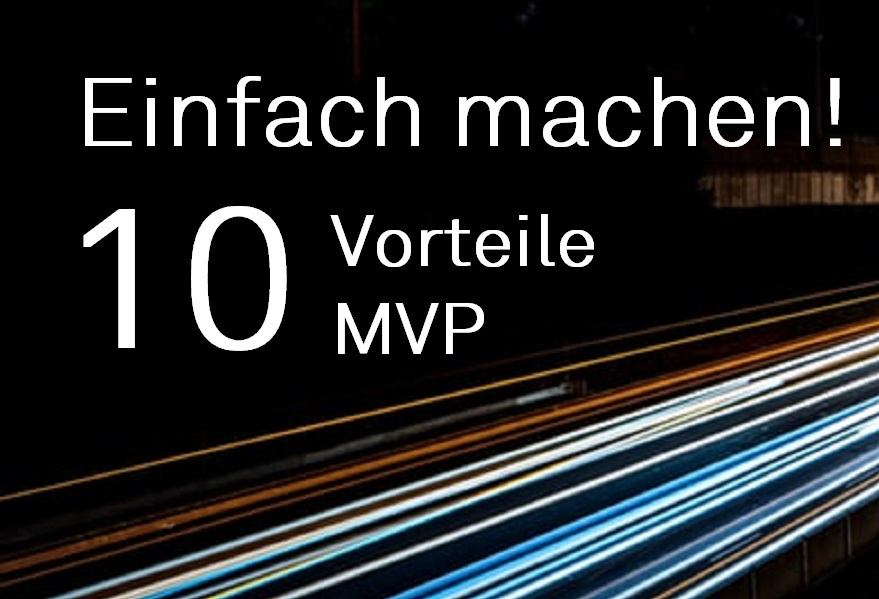The markets are fast moving. To remain competitive, an immediate response to customer needs is necessary. Long development phases for new products, business models or services give the competition a head start and create a large risk for the company. The Minimum Viable Product is a possible strategy to react to market needs in a timely manner and with little effort. The MVP is a version of a new product, service or business idea that is created with little effort and used to gain customer feedback. One speaks of a first “usable” product, usually with minimal functionality.
Even if there are critics of this strategy, it has a few advantages for the new, agile working world and in comparison to dynamic start-ups.
- Quick reaction to changing needs in the market.
- An MVP allows the testing of a market gap with as little development effort as possible. This gives your company clarity about whether there is a market for a product, a service or a new business idea.
- Customer feedback is directly integrated into the further development process. In this way, the product can be improved step by step and you avoid products that your customers don’t even want.
- The information gained about customer wishes enables you to direct your capital investment towards the best product.
- Overall, the risk is reduced during the development of products, services or business models.
- You save resources, money and time.
- Your customers become early adopters, which increases loyalty. The appeal of the development process is great and the influence of customer feedback leads to a feeling of appreciation on the part of the customer.
- Releases can be promoted excellently. Your company can win brand ambassadors or integrate influencers, for example, through beta tests in social media.
- You create an ideal relationship between capital investment and success on the market.
- A quick market entry becomes possible and you attract the attention of potential investors.
In addition to their use in software and app development, MVP play a central role in the transfer of science into practice, especially in times of digital transformation. According to the basic principle, the cycle “Build-Measure-Learn” is followed. This approach can also be applied to work in project teams and is similar to the iterative approach of the scholarship holders in the Graduate School of Logistics.
